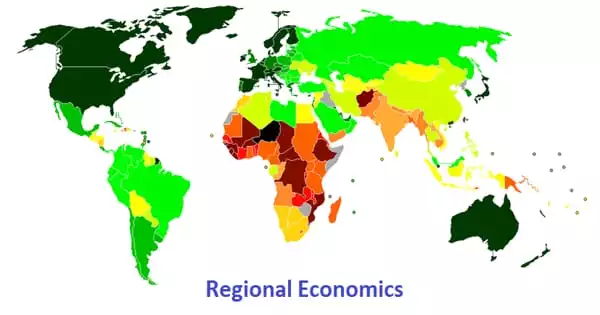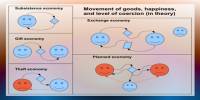Regional economics is a sub-discipline of economics that is frequently regarded as one of the social sciences. It is a fair, transparent, easily accessible, and moderate economic system and range of economic activity in a country’s regional area. Regional economics studies the effects of location and distance on economic activity. It takes into account the effect of location and distance on economic activity. It aids in determining where various types of economic activity will thrive.
The primary concern of regional economics is the proper delineation of a region. It is concerned with proximity and transportation costs, as well as increasing returns to scale and externalities. These elements alter the course of traditional economic theory. It addresses the economic aspects of spatially analyzable regional problems in order to derive theoretical or policy implications with respect to regions whose geographical scope ranges from local to global areas.
Origins
Regional economics, in general, is concerned with the concepts, economic theories, and policy applications related to regional and spatial issues. In regional economics, as in standard economics, any spatial phenomenon can result in an outcome that reflects both the private and non-private or social optimum. When the two do not coincide, which is most of the time, the system generates ‘externalities.’ Because of agglomeration economies, for example, a spatial pattern emerges in which activities tend to cluster in certain areas or regions, resulting in interregional inequality and urban centers. If left unattended, that pattern can create a series of ‘externalities’ such as congestion, pollution, social tensions, instability, and spatial inefficiency.
Many traditions have been shared by regional economics and regional science, whose earlier development was fueled by Walter Isard and some economists’ dissatisfaction with existing regional economic analysis. Despite such a pessimistic view of regional economics, it is difficult to deny that the “economic” approach to regional problems was and continues to be the most influential throughout the history of regional science. As a sub-discipline of economics, it has developed its own traditions and approaches that are consistent with the subject matter or perspective of economics.
Location theory developed independently in Germany and North America in the early twentieth century, and the theory of external economies from “localized industries” (as described in Alfred Marshall’s Principles of Economics (1890)) formed the theoretical foundation of regional economics, which has played a central role in regional science.
As the preface and contents of August Lösch’s Die räumliche Ordnung der Wirtschaft, which was translated into English by W. H. Woglom in 1954 under the title The Economics of Location, consistently demonstrated, an economic approach to locations has been central in both regional economics and regional science.
Harold Hotelling’s spatial approach to economic competition, published in The Economic Journal in 1929 under the title “Stability in Competition,” and Edgar M. Hoover’s Location Theory and the Shoe and Leather Industries (1937) and The Location of Economic Activity (1948) were the United States scholars’ representative contributions to theorizing and empirically verifying regional economic problems.
















